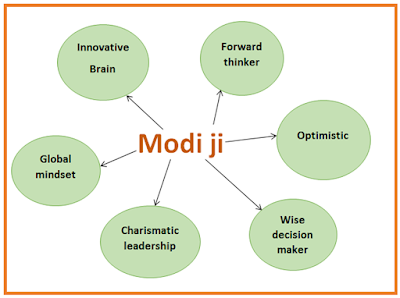Awareness of contactless credit and debit cards
It is an innovative step for withdrawing money.
In revolutionary technical world, where
people are highly reliant on internet technology, contactless credit cards are
good options. Around the world, users are availing such magnificent facility
but in India, this trend is still in the embryonic stage and currently very few
banks are offering contactless credit cards. State Bank of India and ICICI Bank
have launched contactless cards in the country, which will help make
transactions faster. The banks are aiming to leverage Reserve Bank of India
(RBI)’s guidelines which allow them to process contactless transactions below
Rs 2,000 without a PIN.
Concept of
contactless cards:
As the name designates, a contactless smart
card is a contactless 13.56 MHz credential whose dimensions are credit-card
size. Its entrenched integrated circuits can store and sometimes process data
and communicate with a terminal via radio waves. There are two broad categories
of contactless smart cards. Memory cards contain non-volatile memory storage
components, and perhaps some specific security logic. Contactless smart cards
do contain read-only RFID called CSN (Card Serial Number) or UID, and a
re-writeable smart card microchip that can be transcribed via radio waves.
The cards do not require direct contact
between the card and the terminal dissimilar that is required in regular cards.
They need to be just tapped and waved near the requisite terminal. In order to
process the payment, such cards use radio frequency identification (RFID) or
near field communication (NFC) technology. Radio transmission is used to
establish contact when the card is waved or tapped near a terminal that is furnished
to receive these signals. Thus, if the card is waved near a terminal which is
not enabled to read these card then the card will not operate as a contactless
card.
A chip and a radio frequency antenna are implanted
in the card. This allows the terminal to get the particulars without coming in
direct contact with the card. The account information of the accountholder is
communicated through the secure network of the card issuing brand.
Beginning
from 2005, a major application of the technology has been contactless payment
credit and debit cards. Some examples include:
·
ExpressPay – American Express
·
PayPass – MasterCard
·
Zip – Discover
·
payWave – Visa
In general, there are two classes of contactless
bank cards:
1. Magnetic stripe data (MSD): Contactless MSD cards
are similar to magnetic stripe cards in terms of the data they share across the
contactless interface. They are only distributed in the U.S.
2. Contactless EMV: Contactless EMV cards have two
interfaces (contact and contactless) and work as a normal EMV card via their
contact interface. The contactless interface provides similar data to a contact
EMV transaction, but usually a subset of the capabilities (e.g. usually issuers
will not allow balances to be increased via the contactless interface, instead
requiring the card to be inserted into a device which uses the contact
interface).
User may have numerous queries regarding such new
technology credit card. They often ask that how they come to know whether their
credit card is a contact less card or not.
Users can look for this sign:
This sign indicates that the card and the
point where it is to be swiped are equipped with the technology to process the
card without direct contact. This sign is required on the card and the terminal
as well.
Other useful
information about contactless cards is as under:
-
These cards work within a range of 4 cm of the terminal where the payment is to
be processed. The functioning is subject to the contact not being blocked by a
metallic object.
-
Customers can use contactless credit cards as normal cards also and swiped at
terminals if required. For cash withdrawals, the card has to inserted or dipped
in the machine.
-
As per the information available, transactions of only Rs 2,000 or below are
allowed on contactless credit cards. For transactions more than that amount,
the card will have to be swiped like a normal card and the pin needs to be
entered.
-
It has also feature of getting alerts and a transaction slip as in the case of
normal cards.
-
Credit card issuing company may fix the number or frequency of transactions per
day/per month allowed as per their policy.
Benefits of contactless
cards:
Presently,
there is withdrawal limit of Rs 2,000 in Indian banks.
Contactless
cards are safer than other cards in many ways. Since the card does not leave
the hands of the holder, there is no danger of forgetting the card, somebody duplicating
it or losing it.
The
transaction processing is also faster due to the fact that swiping is not
required and also no PIN entering is required for amounts under Rs 2,000.
-
For big transactions, they can be used just as a normal card.
-
People may be anxious that if they are near a contactless terminal, a
transaction may be processed without them actually knowing. This does not
happen as the card has to be waved and tapped and an amount has to be entered
for it to be processed.
Another
advantage of using contactless credit card is that there is no danger of a twin
transaction as when one transaction is processed, customers get an alert and a
light or beep indicates that the transaction has been successful.
Contactless cards increase the ease and
convenience of transactions. Moreover, the speed at which the transaction can
be carried out is almost double that of traditional cards.
To
windup, it is said that contactless payments are those that transfer data
between a point-of-sale device (equipped with a contactless reader) and a
contactless enabled payment instrument (credit card, key fob, and smart phone).
Contactless payments can be done using credit cards and debit cards, key fobs,
smart cards or other devices that use RFID or NFC wireless technology for
making secure POS payments.



Comments
Post a Comment